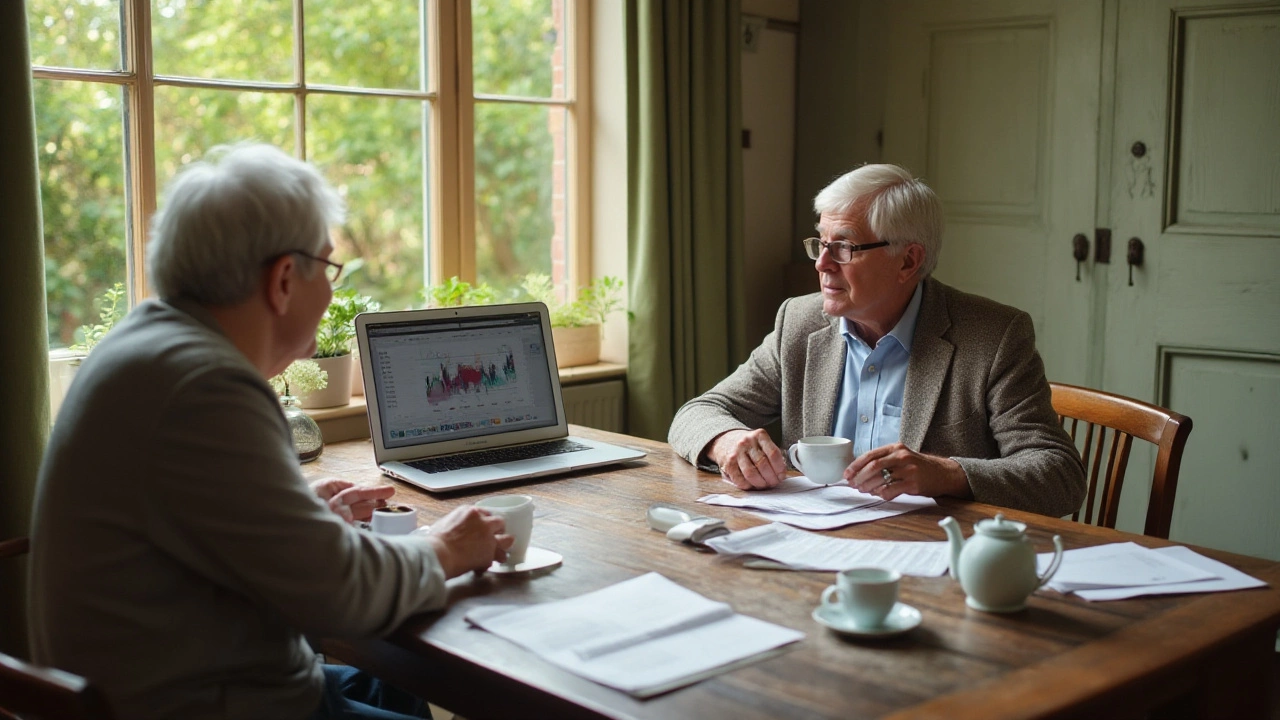Investing at 70 – What You Need to Know Right Now
If you’re 70 or older, you might think it’s too late to think about investments. That’s a myth. Money can still work for you, and the right moves can boost your income, protect your savings, and give you peace of mind.
Why Investing at 70 Still Makes Sense
At 70, your biggest goal is usually to turn your nest egg into reliable cash flow. Investing helps you beat inflation, so your buying power doesn’t shrink. Even a modest return can mean a few extra pounds each month for bills, travel, or hobbies.
Beyond beating inflation, the right investments can lower the amount you need to dip into your core savings. That means you keep a bigger cushion for emergencies or unexpected health costs.
Most importantly, you control the risk. You decide how much you want to protect your capital and how much you’re willing to let grow. By focusing on low‑volatility options, you can keep the downside small while still earning more than a basic savings account.
Top Investment Options for the Over‑70s
1. Cash ISA or Lifetime ISA: These are tax‑free shelters that let you keep money safe while still earning some interest. Look for the highest rates, even if they’re modest – every extra percent counts.
2. Fixed‑Rate Bonds: Government or high‑grade corporate bonds give you a set interest rate for a set period. They’re predictable, and you can ladder them (buy several with different end dates) to keep cash flowing.
3. Dividend‑Paying Shares: Large, established companies often pay steady dividends. Because the capital is not the main focus, the price can wobble a bit, but the dividend provides regular cash.
4. Equity Release (if you own a home): In the UK, a lifetime mortgage lets you unlock part of your home’s value without monthly repayments. Use the cash to fund investments or cover living costs, but be aware of interest and the impact on inheritance.
5. Peer‑to‑Peer Lending: Some platforms let you lend small amounts to borrowers for higher returns than a bank. It’s riskier, so keep any exposure small and diversified across many loans.
6. Annuities: If you prefer guaranteed income, a fixed‑rate annuity converts a lump sum into a steady monthly payment. Compare providers – fees can vary a lot.
When you pick a mix, think about liquidity (how quickly you can get cash), tax implications, and your comfort with market swings. A simple rule works well: keep 60‑70% of your funds in low‑risk assets (bonds, cash ISAs) and 30‑40% in higher‑potential growth (dividend stocks, peer‑to‑peer).
Don’t forget to review your portfolio every year. A small change in interest rates or a new government rule can shift what’s best for you.
Finally, seek advice from a fee‑only financial planner who understands senior needs. A fresh set of eyes can spot gaps, suggest tax‑saving moves, and make sure your plan aligns with your health, lifestyle, and legacy goals.
Investing at 70 isn’t about chasing high‑risk wins. It’s about turning the money you already have into a reliable, growing resource that lets you enjoy the years ahead without worrying about running out of cash.
Smart Strategies for Investing $100k at Age 70

Investing at seventy calls for careful planning and thoughtful decisions. This article explores sensible strategies for using $100,000 to bolster retirement savings, ensuring both security and potential growth. It covers diversified portfolios, bonds, real estate, and other prudent options that align with lifestyle needs and risk tolerance. With simple language, it invites the reader to confidently navigate investment landscapes during the golden years.
Read More >>